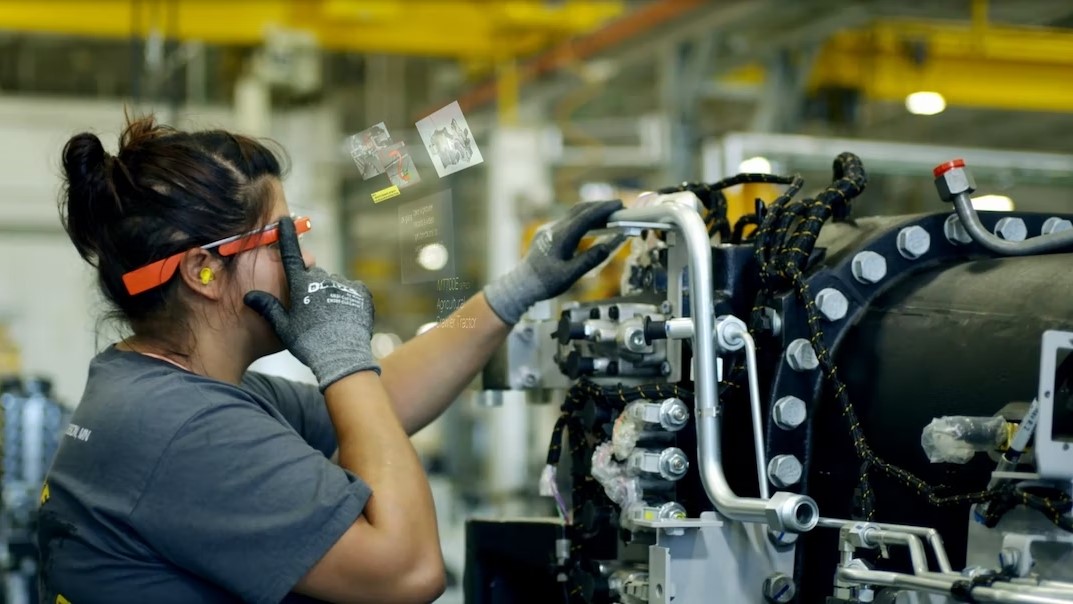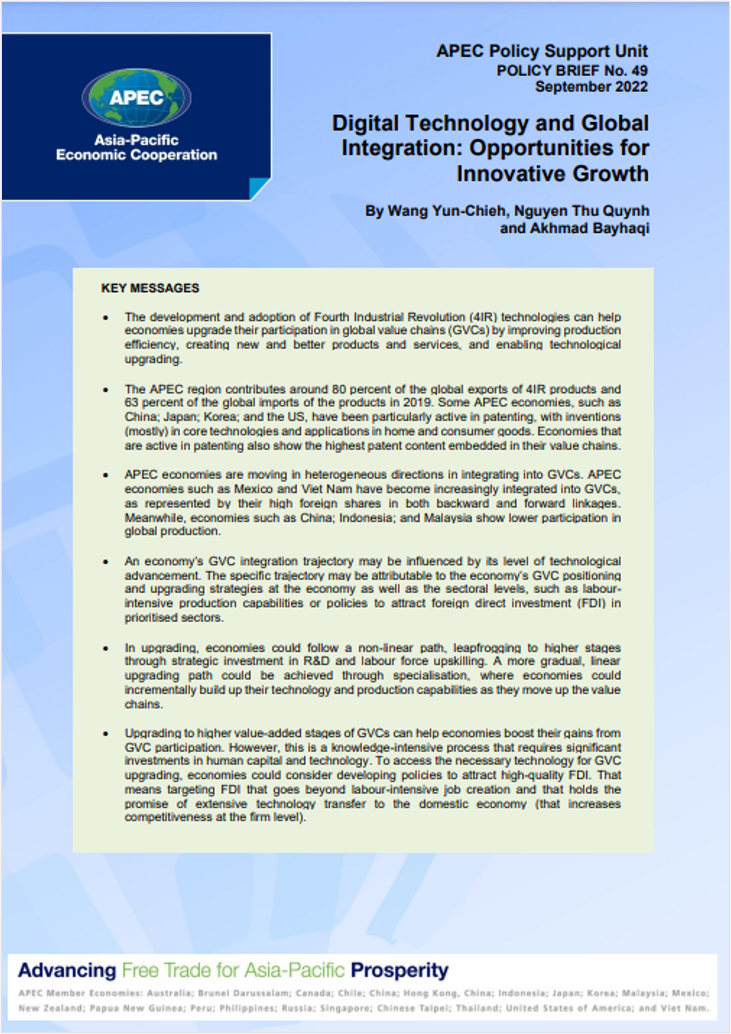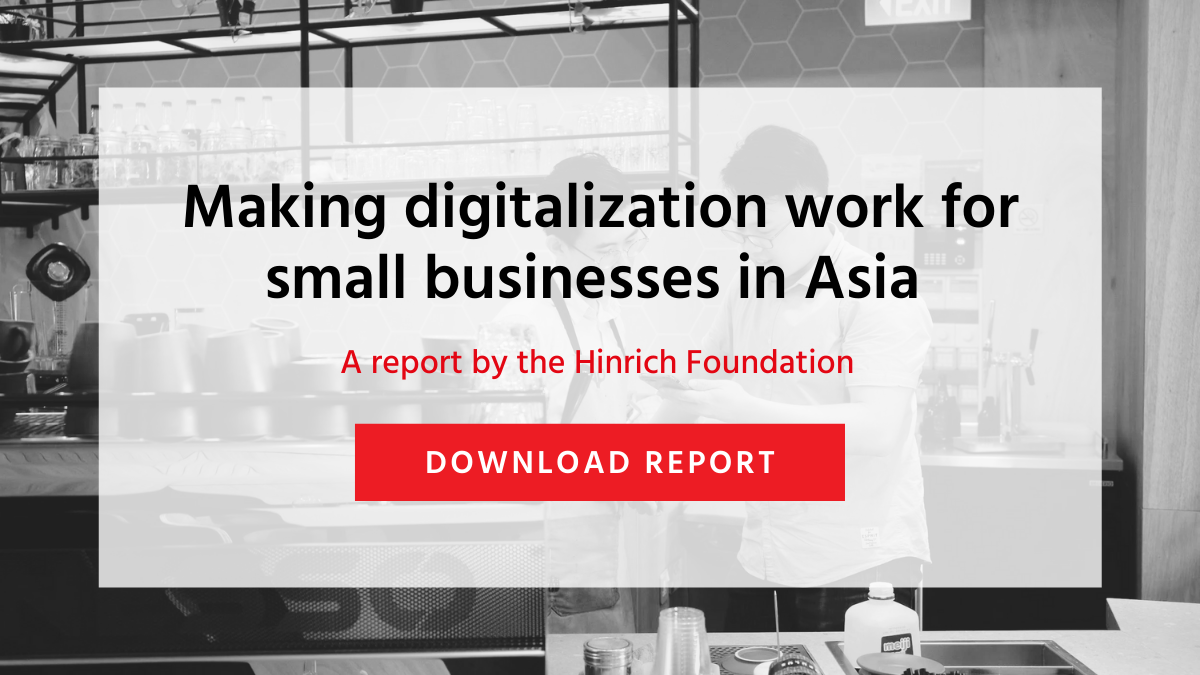Digital trade
Digital technology and global integration: Opportunities for innovative growth
Published 11 October 2022
The Asia-Pacific region is a network of vibrant technological and innovation ecosystem. Based on a policy brief supported by the Hinrich Foundation, this article from the APEC Policy Support Unit discusses the importance of the fourth Industrial Revolution (4IR) to rising through the global value chain (GVC).
The Covid-19 pandemic and the resultant global lockdowns have made more apparent the importance of innovation and digital technology. Digital technology transformed how business and industry approach face-to-face interactions, and offered solutions to the challenge of physical distancing. Broadly speaking, digital technology has enhanced the resilience of value chains, facilitated innovative global value chain (GVC) participation, and fostered new drivers of growth for post-pandemic economic recovery. In this note, which is based on a policy brief on digital technology supported by the Hinrich Foundation, we discuss the role of the fourth Industrial Revolution, a reference to broad global transformations wrought by emerging digital technologies, to GVC participation and upgrading as well as the possible strategies that could be adopted by economies.
Supply chain in the global economy
In the third quarter of 2021, intermediate goods accounted for 53% of total global trade (excluding fuels), a ratio that has remained steady over the last decade.[1] This statistic reflects the level of global interdependence in production and distribution processes, particularly on supply chain networks.
In the 1960s, management guru Peter Drucker characterized supply chains and business logistics as “the economy’s dark continent”. At the time, though supply chain management is important to firms, only a few have a truly good grasp of the issues involved.[2]
Nowadays, supply chains operate globally, each threaded through disparate domestic rules and regulations. Multinationals such as Apple Inc. have around 200 suppliers with 615 production facilities across the globe involving economies from the US to Viet Nam.[3] Supply chains have also attracted a lot of attention due to rising inflation in many economies in a world still struggling with economic recovery.
GVCs are an important vehicle for local firms to join the global production and innovation ecosystem. Technology can facilitate access to the supply chain network. For example, advanced digital production technologies can bring benefits and opportunities[4]:
- Enhance product service characteristics and functionalities that offer the possibility of industrial revitalization and growth through the creation of new and better products and services.
- Improve production efficiency through technologies such as Big Data analytics.
- Enable broader access to and deeper utilization of capital that enables technology upgrading.
The fourth Industrial Revolution (4IR) in the APEC region
The advance of the fourth Industrial Revolution (4IR) integrates digital technologies across different sectors, providing a foundation for the structural transformation of value chains in the medium to long term. The 10-year moving total for the number of 4IR patent families in APEC economies has increased more than six-fold: from 9,097 in 2000 to nearly 57,000 in 2019. Economies such as China, Japan, Korea, and the US lead the APEC region in cumulative number of 4IR patent families in 2019. That 4IR patents are concentrated in these economies mostly due to the high technological threshold of 4IR technologies, requiring both general and sector-specific foundational capabilities.
As trade involves both the transfer and delivery of tangible and intangible products, one measure to reveal the transfer and flows of 4IR technologies and innovation is through the trade values of 4IR products. Using six subfields of 4IR products categories (CADCAM, robots, automated welding, 3D printing, regulating instruments, and ICT),[5] APEC as region contributed around 80% (US$699 billion) of global exports of 4IR products and 63% (US$533 billion) of global 4IR imports in 2019.
Companies vary in their level of understanding of 4IR. Based on employers’ surveys conducted in Cambodia, Indonesia, the Philippines, and Viet Nam, the following sectors have considerably good understanding of 4IR technologies and the relevance for their companies: automotive (78%), information technology and business process outsourcing (73%), food and beverages (59%), logistics (57%), electronics (56%) and agro-processing (56%).[6]
Global Value Chain integration and upgrading
Using the ADB-ADBI Innovation and Structural Transformation Database[7], it is found that high patent intensity in foreign contributions in the electrical and optical equipment sector correlates with high GVC integration in this sector; suggesting that foreign contributions of patented technology in the electronics sector provided essential value-adding activities. Indeed, for products such as semiconductors, full reliance on domestic capacity could be very costly. A Boston Consulting Group report[8] highlighted that building an entire local supply chain of full-scale self-sufficiency would require “$1 trillion in incremental upfront investment, resulting in a 35% to 65% overall increase in semiconductor prices and ultimately higher costs of electronic devices for end users.”
Within GVCs, the revenue generated from each stage is not equally distributed with higher gains in certain segments of the chain. The labor-intensive manufacturing stage, for example, generally contributes a lower value-added ratio. Therefore, it is desirable for economies to move upstream toward research and development or downstream toward activities such as branding and marketing to obtain higher marginal revenue. To move up the value chain, economies may need to pay attention to three things: improving the quality of the workforce, enhancing service diversification, and promoting technology adoption.[9]
Upgrading in GVCs is a knowledge-intensive process that requires significant investments in human capital and technology. Economies can actually follow a non-linear path in upgrading, that is, to leapfrog to higher stages through strategic investment in R&D and labor force upskilling. A more linear path would involve specialization, allowing economies to gradually build up their technology and production capabilities.
While 4IR may represent a window of opportunity for a leapfrogging strategy, it may also involve significant risks of failure; success will depend on several factors such as the level of digital literacy, training and upskilling of the local workforce, domestic market size, and the dynamic involvement of multinational corporations and foreign direct investment.[10]
To learn more about the role of digital technology in helping economies upgrade their participation in global value chains, read the APEC policy brief, supported by the Hinrich Foundation.
1. World Trade Organization (WTO), “Information Note on Trade in Intermediate Goods: Third Quarter 2021.” (WTO, 2021), https://www.wto.org/english/res_e/statis_e/miwi_e/info_note_2021q3_e.pdf
2. Kelly J. Thomas, “Supply Chain - The Economy's Dark Continent.” Last modified June 2021, https://www.worldlocity.com/post/2018/07/03/supply-chain-the-economys-dark-continent
3. Julie Young, “9 Major Companies Tied to the Apple Supply Chain.“ Last modified March 2022, https://www.investopedia.com/articles/investing/090315/10-major-companies-tied-apple-supply-chain.asp
4. United Nations Industrial Development Organization (UNIDO), “Absorbing Advanced Digital Production Technologies to Foster Industrialization: Evidence from Case Studies in Developing Countries” (Vienna: UNIDO, 2020).
5. N. Foster-McGregor, Ö. Nomaler & B. Verspagen, 2022, The ADB-ADBI Innovation and Structural Transformation Database: A Guide, UNU-MERIT and ADB Institute, https://innovatransformation.adbi.org/
6. The percentages refer to respondents who agree or strongly agree. ADB, “Reaping the Benefits of Industry through Skills Development in High-Growth Industries in Southeast Asia: Insights From Cambodia, Indonesia, the Philippines, and Viet Nam” (Manila: ADB, 2020).
7. The database includes a broad variety of trade, supply chain, innovation and capital indicators critical to the innovative growth and structural change of economies. The database is accessible at https://innovatransformation.adbi.org/
8. A. Varas, R. Varadarajan, R. Palma, J. Goodrich, and F. Yinug. “Strengthening the Global Semiconductor Supply Chain in an Uncertain Era.” (April, 2021), https://www.bcg.com/publications/2021/strengthening-the-global-semiconductor-supply-chain
9. J. Choi et al., “The Role of Vietnam’s FDI Inflows in Global Value Chains Participation and Economic Growth,” Working Paper WP/21-02, AMRO, Singapore, 2021.
10. K. Lee, “Economics of Technological Leapfrogging,” in J. Lee et al. (eds), The Challenges of Technology and Economic Catch-up in Emerging Economies (New York: Oxford University Press, 2021), pp. 123–59.
© The Hinrich Foundation. See our website Terms and conditions for our copyright and reprint policy. All statements of fact and the views, conclusions and recommendations expressed in this publication are the sole responsibility of the author(s).







